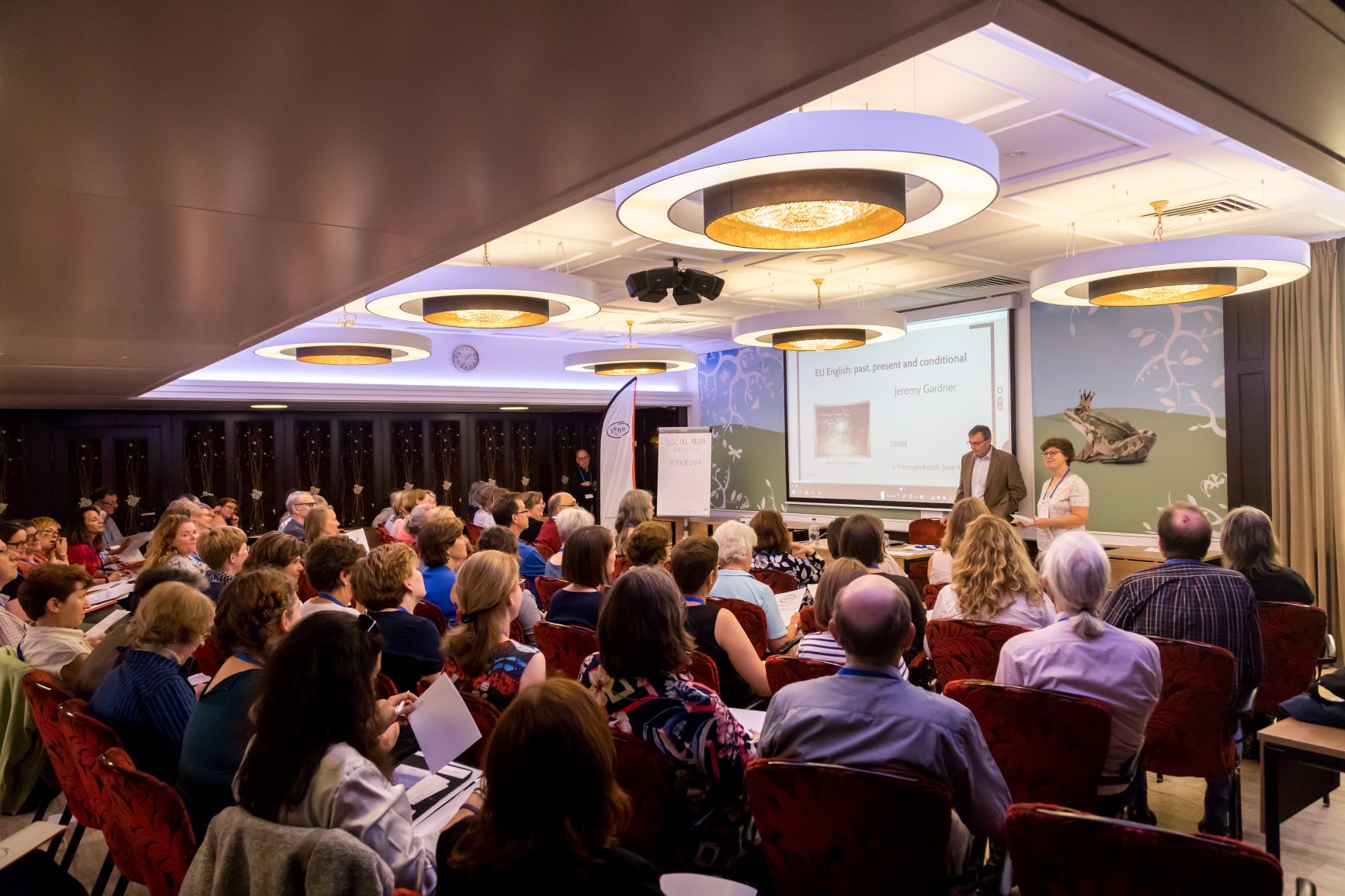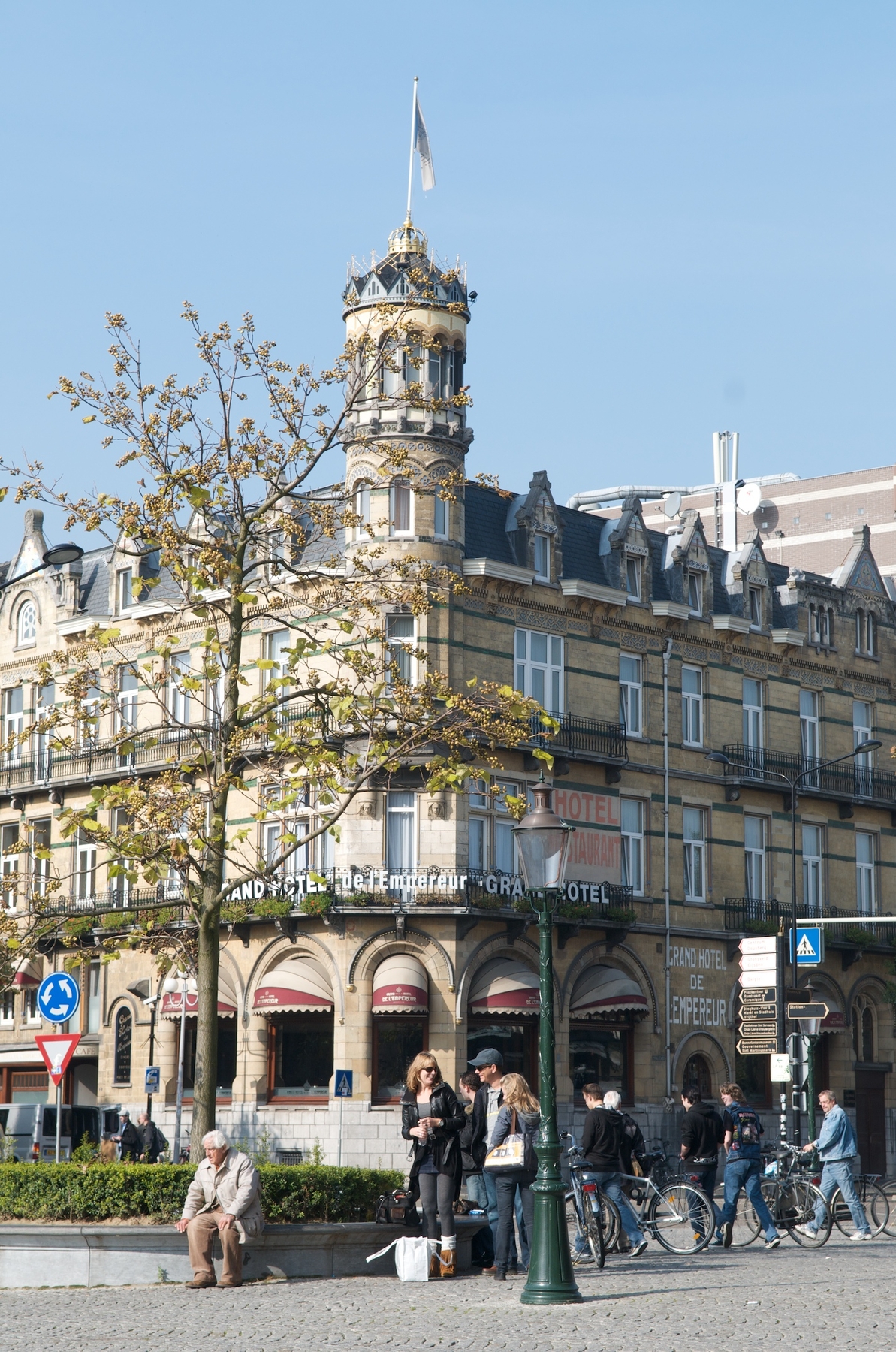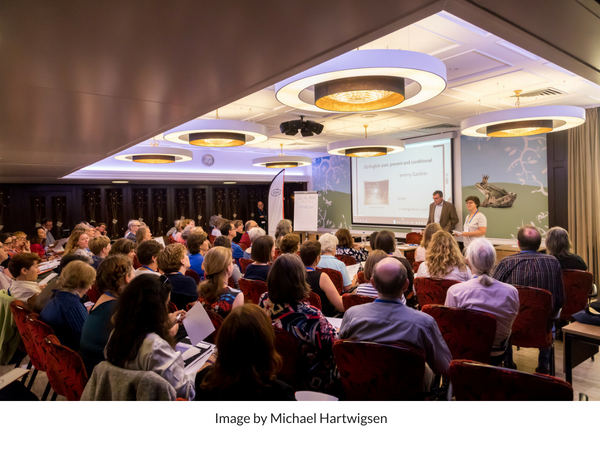
Photo by Michael Hartwigsen
There is no shortage of conference accommodation in the Netherlands, so choosing one just requires a map of the country and a pin, right? Wrong, especially if it’s for the SENSE biennial conference…
Two years ago, I was asked to recommend a location for the 2018 conference. It was quite a challenge, but eventually the decision went in favour of ’s-Hertogenbosch – not because it was a city nobody could spell, but because it offered the right combination of facilities that discerning SENSE members expected.
So what is the ideal location for our conference? In short, there isn’t one, as everyone has his or her preferences. Some of us want a city location with good public transport connections, others want a monastery in the middle of nowhere with free parking, no distractions, and waking up to bird song. As we are becoming a more international event, simply choosing a place that is accessible by train, bus or bike is not enough.
Starting last January (yes, January 2019!), I longlisted almost fifty locations that, in my experience with other conferences, would be suitable. These included several locations suggested by other SENSE members. I shortlisted this to twelve. Of those twelve, five did not have availability, offered a ridiculously high rate or simply failed to respond. Finally it came down to a straight contest: Rotterdam or Maastricht. My personal recommendation was for Maastricht, partly because they had come in second place in 2018, and were very, very keen to have us this time.
During the summer, several of the conference committee members visited the location, viewed the facilities and spoke to the staff. In the end, Maastricht won, but as a consolation prize Rotterdam got the Eurovision Song Contest!
Price is not the only issue, though of course this is a major consideration. Flexibility is most important. I had to explain to all the potential locations that if I was organizing a conference for a major national/international/multinational company, I could tell them immediately how much accommodation we would need, safe in the knowledge that the organizers would pick up the tab. It’s quite unusual for conference locations to understand that we are all freelancers, we pay our own expenses, and because the event is not during ‘office time’ (in other words, in our own time), SENSE cannot guarantee attendance numbers a year in advance.
Another important consideration was that the location should not charge more for two half days than they would for one full day. That’s a bit of a cheek, as it’s unlikely that they would be able to sell the conference facilities on the Saturday morning or Sunday afternoon, so in true Dutch tradition, it’s a case of ‘twee halen, één betalen’!* My shortlist was limited to locations that were prepared to meet us on this point, and most of them were.
I hope I have found the right location for the 2020 conference. If I have, you may congratulate me in June; if not, it’s the committee’s fault! The planning of the speakers, the programme, the workshops and the other activities is going ahead at full steam. My job is complete, but I’m already looking discretely at locations for 2022 – just in case the committee asks me again!

This is where we well be holding the pre-conference workshops and the conference itself: at the four star Amrâth Grand Hotel de l'Empereur in Maastricht. Conference delegates will be able to book a room at the special conference rate once registration for the conference itself opens.
For more information about the conference hotel, see the hotel's website.
Check this page for full details of the conference, location and programme!
© Image by Maastricht Marketing/Jonathan Vos. All rights reserved.
* for non-Dutch speakers, this is the equivalent of ‘Buy one, get one free’.

Slipshod
As a freelance translator, editor and writer, my work shoes are slippers. I’m slipshod in the original sense of the word – shod in slippers – while trying to produce work that isn’t. For the SENSE 2018 Conference in Den Bosch on 9 and 10 June, it was time to exchange my slippers for a pair of proper shoes, time to leave my familiar desk and venture out into the world.
This is exactly what Sarah Griffin-Mason, Chair of the Institute of Translation and Interpreting, urged us to do in her plenary talk at the end of the conference. The theme of the conference was ‘Englishes now! Trends affecting language professionals’, and Griffin-Mason talked about these trends. The main ones are artificial intelligence, machine translation and the gig economy. If we’re not careful, people will start to believe they no longer need human translators, editors, writers and interpreters, even though humans understand context in a way that machines cannot – not yet at least.
The trouble, Griffin-Mason continued, is that many of us become language professionals because we want to shut ourselves off from the world and think about words. We like wearing slippers. However, the time has come for the slipshod to leave the safety of our home offices and tell the world what we do. This brings us to another problem with language workers, said Griffin-Mason. We’re good at helping others communicate, but not so good at telling the world why it needs us. And it does need us, if Jeremy Gardner’s plenary talk that opened the conference is anything to go by.
Gibberish and gobbledygook
Gardner’s talk was a cautionary tale of what you get when good language goes bad: jargon, gibberish and gobbledygook. And claptrap, hocus-pocus, jabber, twaddle, balderdash, double Dutch, baloney and hogwash. The EU’s form of English, which was what Gardner’s talk was about, is a prime example. For insiders, it’s obvious that ‘ovine animals’ are sheep and ‘caprine animals’ are goats, and that every other word is an abbreviation of something else. Insiders also know that an ‘enterprise’ is a business, that a ‘mission’ is a business trip and that ‘agents’ are simply people who work for the EU. For outsiders, however, this is gibberish and gobbledygook. Could, Gardner wondered, the EU’s opaque communication be one of the reasons why the public is so hostile to it? If the EU was clearer in its communication, would the public be more aware of what it does? Could a beslippered editor have saved Britain from Brexit? Who knows?
Jargon was also a theme in another presentation I had signed up for: Charles Frink on how poor writing habits are inherited. The presentation was on academic writing this time, but again the message was how important clear communication is. Unfortunately, academic writing is becoming less readable and more jargon-filled, which makes it increasingly difficult for non-specialist readers to understand. Does that matter? Well yes, because non-specialist readers could be on the grant-assessment boards that decide whether to award a researcher a grant. What makes for good academic writing? It’s the same as with any writing. The text needs to be readable. It needs to tell a story. It should avoid jargon, the passive and complex sentences. It should express rather than impress.
Good and bad academic writing
Whereas Charles Frink spoke about what makes academic writing good, Valerie Matarese talked about what makes academic writing bad. She explained how researchers use source texts or a corpus of texts – textual mentors – to inform their writing. If these textual mentors are badly written, this style is propagated. She called them ‘bad textual mentors’. Again, good language gone bad. It is our job, as editors, to correct bad textual mentors.
Maria Sherwood-Smith also focused on the importance of clear communication in academic writing. With Dutch universities expecting researchers to communicate their research to non-specialists, this may mean opportunities for language professionals. This could be in the form of editing, translating or teaching.
Stout pair of boots
The conclusion from all of this is that while we know why the world needs language professionals, the world does not. The world might think that rough and ready machine translations are fine. The world might think that as long as you get your message across it doesn’t matter how you say it. What the world doesn’t realize is that how you say it often means that you don't get your message across.
We, the slipshod, must therefore leave the comfort of our home offices – perhaps only virtually – and tell the world why it needs us. Or, as they say in Dutch, we moeten onze stoute schoenen aantrekken.* We must don a stout pair of boots and be stout-hearted enough to get our message across before the machines take over.
* 'We have to don a stout pair of shoes.' The Dutch stout and the English stout are related but have parted ways over the years. The Dutch stout now means naughty or impertinent but can also mean daring, audacious or brave, which is the sense of stoute schoenen aantrekken. This is why Karel de Stoute is Charles the Bold in English rather than Charles the Naughty. The English stout also meant proud, fierce, strong and defiant in the past. It also meant having a powerful build, which is where the stout shoes come from, and has since come to mean thickset or corpulent.
 Marianne Orchard is SENSE's content manager. She is a freelance translator (Dutch to English), editor and writer who specializes in creative texts.
Marianne Orchard is SENSE's content manager. She is a freelance translator (Dutch to English), editor and writer who specializes in creative texts.